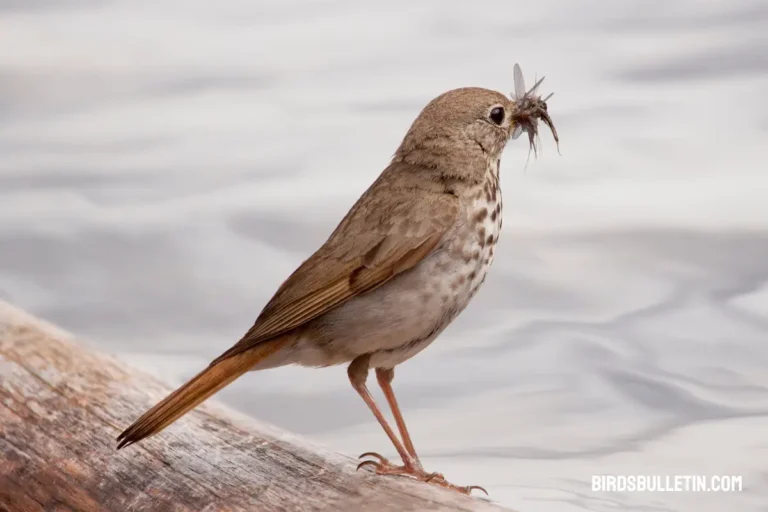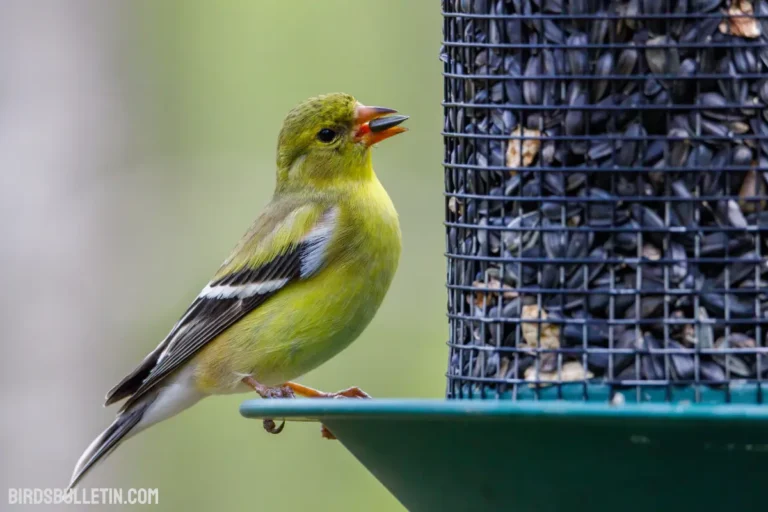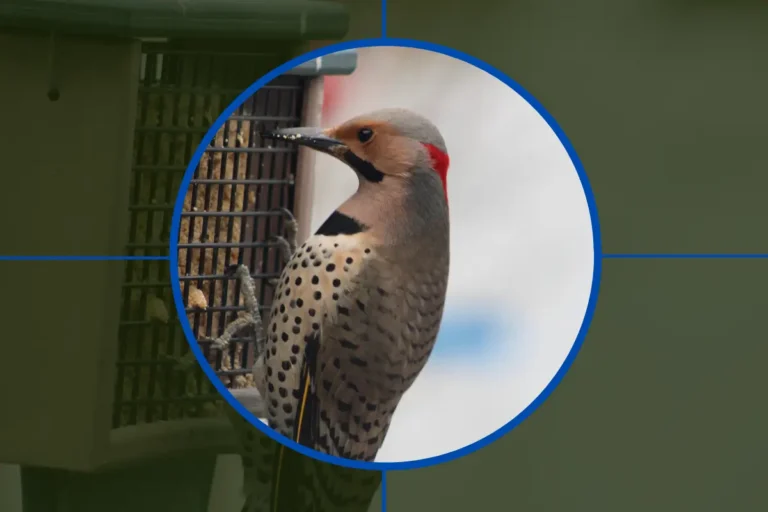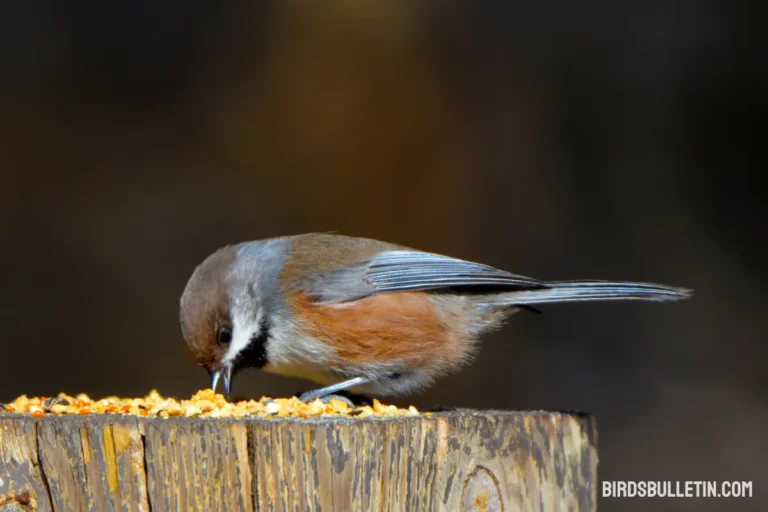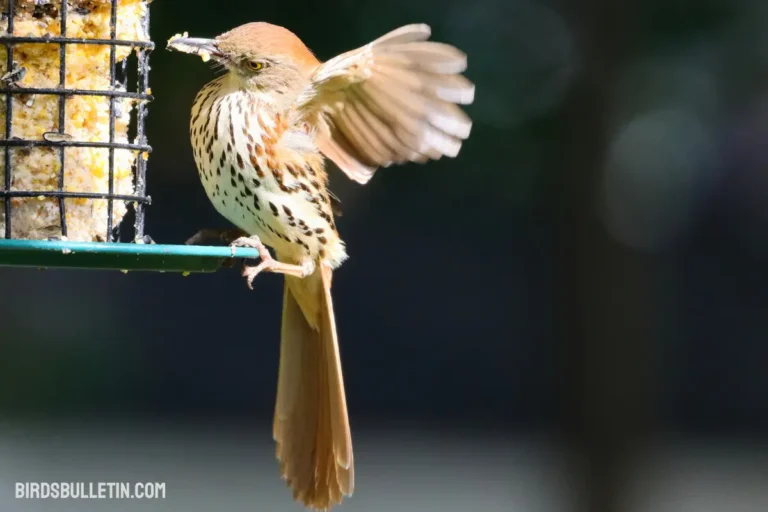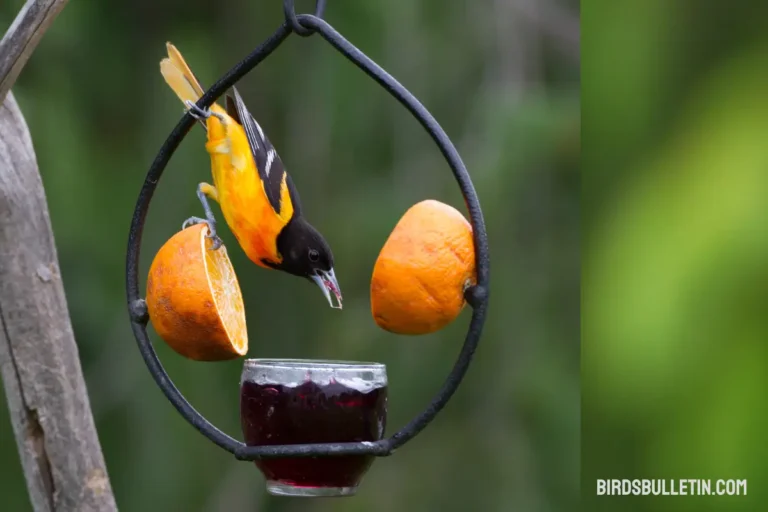What Do Northern Cardinals Eat?
Northern Cardinals are omnivorous, meaning they eat both plant and animal matter. Their diet varies somewhat depending on the season and what food sources are available.
Cardinals have a strong, thick beak well-suited for cracking open seeds and nuts, which make up a major part of their diet.
But what exactly do these birds eat? Here we’ll explore the Northern Cardinal’s diverse diet and how it feeds.
Looking for more articles about birds’ food and diet:
Northern Cardinals Favorite Food
Some of the Northern Cardinal’s favorite foods include:
- Sunflower seeds – Cardinals can often be seen at backyard bird feeders snacking on black oil sunflower seeds. The high-fat content makes them an excellent source of energy.
- Fruit – Cardinals enjoy berries and fruits such as dogwood, holly, cherry, grapes, mulberry, and elderberry. They play an important role in seed dispersal.
- Insects – During spring and summer, Cardinals will eat more protein-rich insects like beetles, crickets, flies, spiders, snails, and caterpillars. Adults feed insects to their nestlings.
- Grain – Cardinals will eat various grains and cereal crops like corn, wheat, oats, rice, and millet.
- Nuts – Cardinals use their strong beaks to crack open tree nuts like acorns, pecans, walnuts, and hazelnuts.
- Sap – Cardinals drink the sap of freshly cut trees during winter when other food sources are scarce.
| Food | Details |
|---|---|
| Sunflower seeds | High in fat, their favorite feeder food |
| Fruits | Favorites include dogwood, cherry, grape, mulberry |
| Insects | Beetles, crickets, caterpillars – high in protein |
| Corn | Waste grain in agricultural fields |
| Tree sap | Tap trees like maple for sap in winter |
| Suet | Nutritious animal fat supplement in winter |
| Peanuts | High-fat nuts are the preferred feeder treat |
The Northern Cardinal is not a picky eater and will consume a wide variety of foods depending on availability. It forages opportunistically, changing its diet with the seasons. Here’s a look at how Cardinals find and consume their meals throughout the year.
How Northern Cardinals Gather Food?
Foraging on the ground – Cardinals spend much of their time hopping along the ground turning over leaves to find insects and seeds. Their crest helps them spot food while foraging.
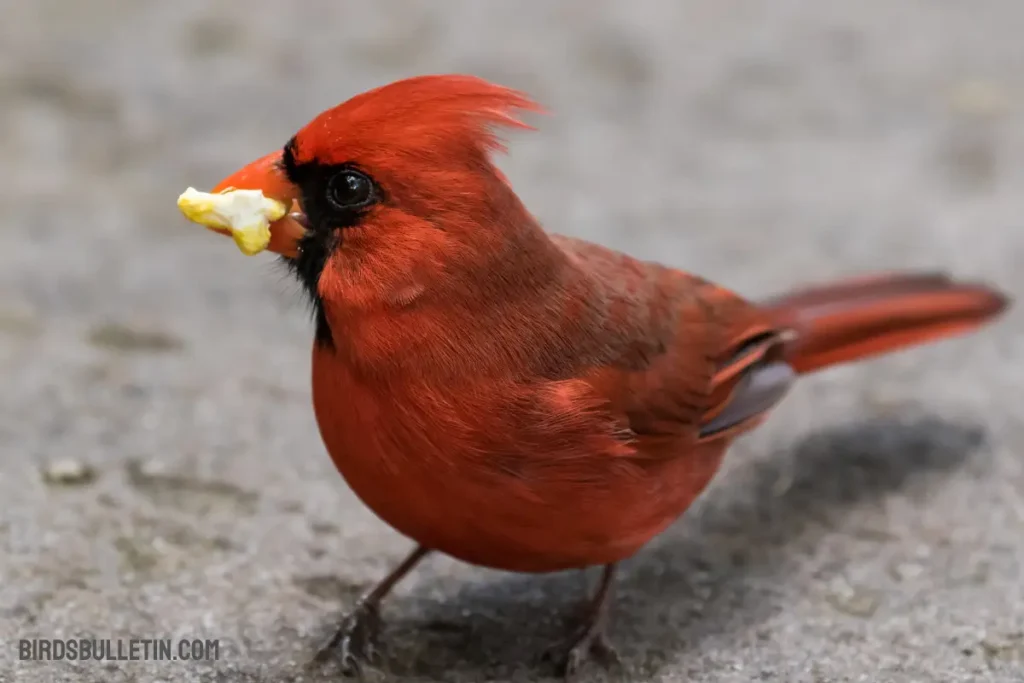
Plucking fruits and berries – Cardinals can be seen perched on trees and shrubs plucking fruits, berries, and seeds. Their curved beaks are perfect for removing flesh from fruit.
Visiting feeders – Backyard bird feeders stocked with sunflower seeds are a cardinal magnet. They perch and grab mouthfuls of seed.
Flower nectar – Cardinals will occasionally drink nectar from flowers such as trumpet creeper and fuchsia when insects are scarce.
Hawking insects – Cardinals sometimes catch insects like moths, flies, and bees right out of the air.
Drilling into sap – To get sap in winter, Cardinals drill into trees like maples, slashes, and birches.
Gleaning fields – After harvest, Cardinals scavenge waste grain left behind in agricultural fields.
What Northern Cardinals Eat in Winter
Food can be harder to come by in the winter, but Cardinals have adapted with the following strategies:
- Switching to more berries and fruits – Cardinals rely more on berry and fruit crops like dogwood, juniper, sumac, and winterberry which persist through winter.
- Visiting feeders – Black oil sunflower seeds from feeders may provide up to 40% of daily calories for Cardinals in winter.
- Drilling sap wells – Cardinals tap into the sap from certain trees.
- Foraging in leaf litter – Cardinals scratch through fallen leaves seeking fallen seeds and insects.
- Eating more grains – Waste grain in fields helps Cardinals bulk up in winter.
- Consuming more suet – Cardinals switch to more animal fats and nutritious suet at feeders.
What do Baby Cardinals eat?
Adult Cardinals feed their young a high-protein diet for rapid growth. Nestling Cardinals eat the following foods:
- Insects – Cardinal parents gather insects and spiders to feed chicks. Easy to digest.
- Fruit – Berries offer nestlings nutrients and moisture. Cardinals favor elderberries.
- Seeds – Chicks are fed seeds like amaranth, lamb’s quarters, millet, and sunflower.
- Sap – Nutritious sap gives nestlings an energy boost.
- Eggshells – Female Cardinals will eat eggshells to recoup lost calcium and then feed pieces to young.
Cardinal parents are hard at work finding food from dawn to dusk to satisfy the appetites of their fast-growing hatchlings. The high-protein insects and fat-rich sap promote chick health and feather growth.
Frequently Asked Questions
01. Where do Northern Cardinals forage for food?
Northern Cardinals spend much time hopping along the ground turning over leaves seeking insects and fallen seeds. They also forage in shrubs and trees for fruits, berries, seeds, and sap.
02. How do Northern Cardinals open nuts and seeds?
Northern Cardinals have thick, strong beaks specialized for cracking open hard nuts and seeds. They use their powerful jaw muscles and beak strength to access the nutritious insides.
03. Do Northern Cardinals visit hummingbird feeders?
Yes, Northern Cardinals will occasionally drink nectar from hummingbird feeders, especially during migration when food is scarce. However, nectar is not a major food source for them.
04. How do Northern Cardinals find food in the winter?
Northern Cardinals switch to eating more berries, sunflower seeds from feeders, waste grain, and tree sap during winter when insects are scarce. They’re resourceful foragers.
Verdict
The Northern Cardinal is an opportunistic and often clever forager, capable of exploiting a wide array of food sources. Their diverse, protein-rich diet supports an active lifestyle and helps Cardinals thrive across eastern North America.
What they eat changes with habitat and season, but Cardinals can adapt by seeking out calorie-dense seeds and nuts, energy-boosting sap flows, and essential fruits and insects.
So next time you see a brilliant red Cardinal feasting at a feeder, consider the varied diet that bright plumage and song rely upon all year round.
References
- Watts, B. D. (2020). Northern Cardinal (Cardinalis cardinalis), version 1.0. In Birds of the World (S. M. Billerman, Editor). Cornell Lab of Ornithology, Ithaca, NY, USA.
- Jones, Z. F., & Vander Ven, K. A. (2014). Northern Cardinals Alter Their Song in Urban Noise. The Wilson Journal of Ornithology, 126(3), 438–446.


